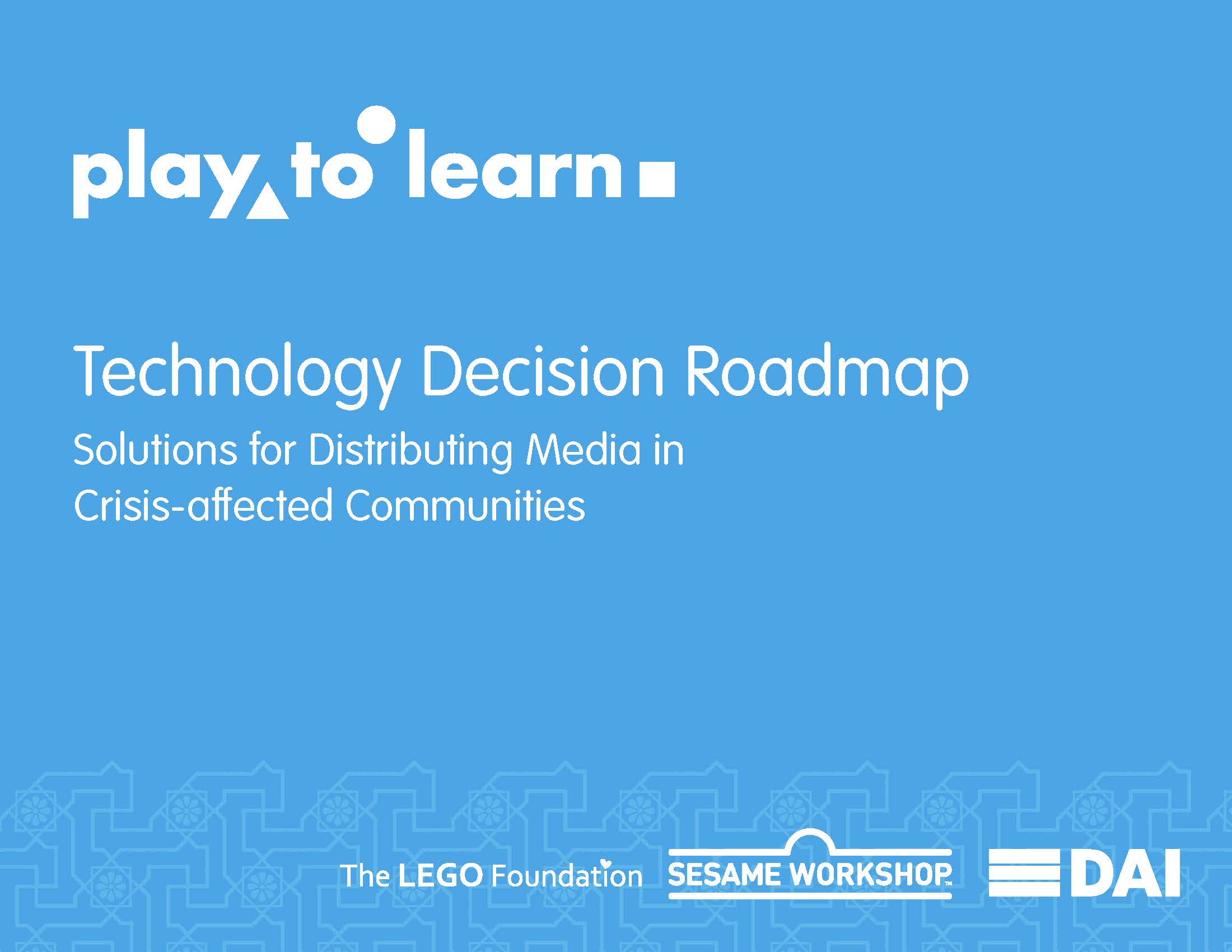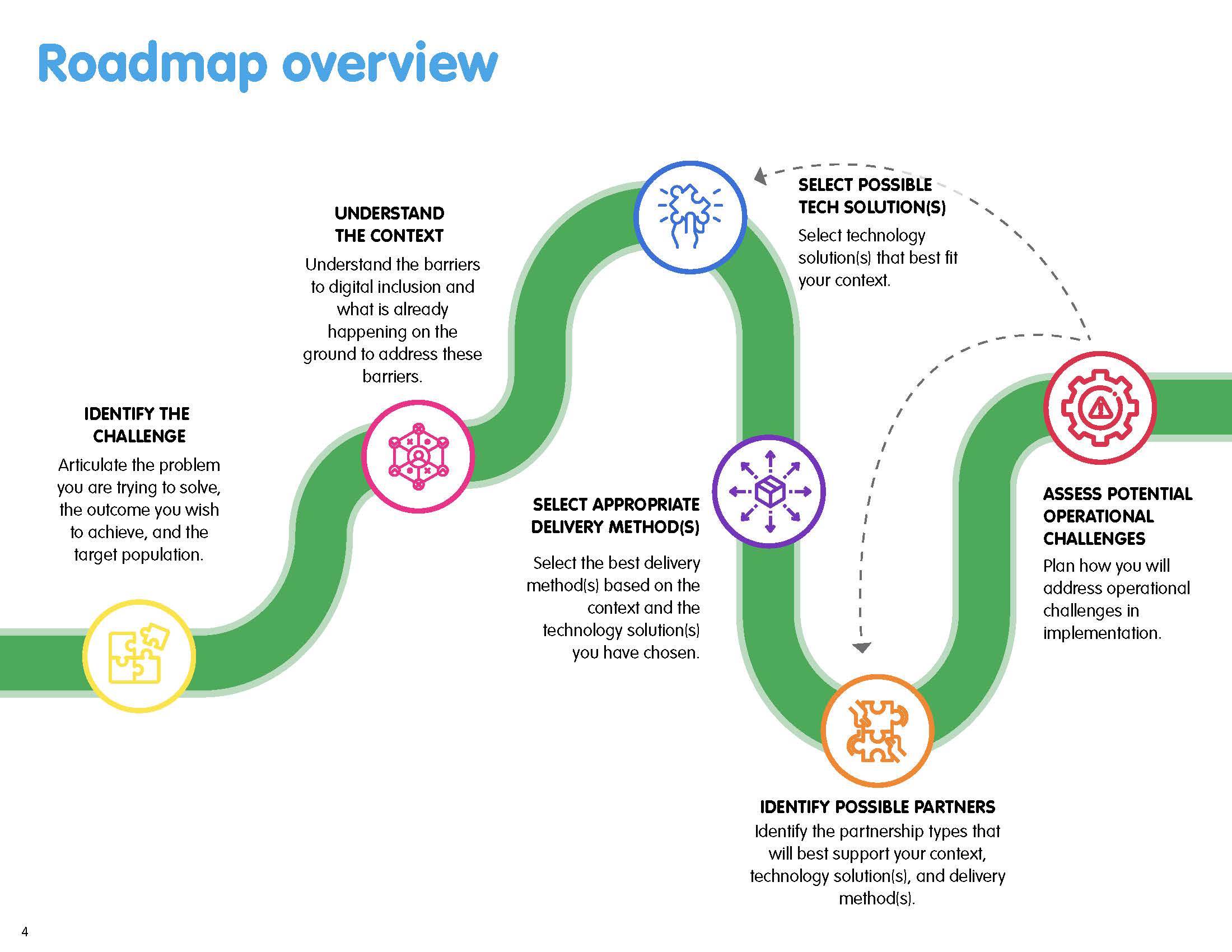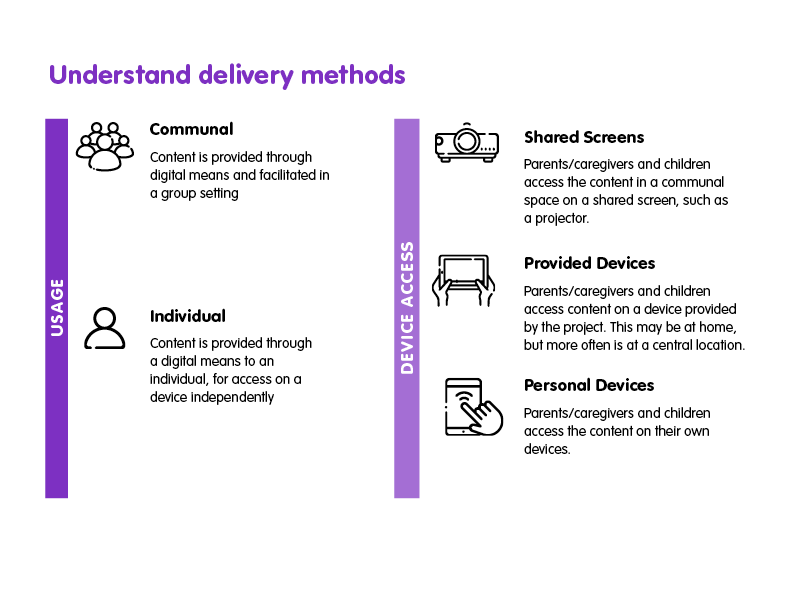Let us know what type of content you'd like to see more of. Fill out our three question survey.
Introducing Sesame Workshop’s Technology Decision Roadmap
Apr 27, 2023
There is no doubt that Sesame Street has produced an immense amount of educational media content for children. The iconic video of the Count von Count muppet teaching children how to count to ten permeates through American society. This value has expanded beyond the United States, providing globally accessible videos to numerous countries. Most recently, in 2022, Sesame Workshop, the nonprofit behind Sesame Street, created a library of newly produced, modular, play-based, and globally relevant animation videos called Watch, Play, Learn (WPL) to be distributed in humanitarian contexts and beyond. The 140 segments are five minutes each and cover thematic early childhood development areas: science, math, social-emotional learning, and health, safety, and child protection.
These videos, along with other programmatic materials, now serve as an innovative global learning resource that can be rolled out to reach children affected by conflict and crises around the world. The big question is “how?” How do we make sure children in the hardest-to-reach places, in areas affected by conflict, in migrant communities, and in low-connectivity settings get access to this valuable media content? A large part of Sesame Workshop’s vision is to address this issue and increase access and inclusion in low-connectivity contexts, where last-mile delivery solutions are a particular challenge.
To do this, Sesame Workshop worked with DAI’s Center for Digital Acceleration to better understand the key barriers, risks, and opportunities to media access for children in these settings. The result of collaborative research is the Technology Decision Roadmap (the Roadmap). The Roadmap helps guide the technology selection process and answers the question of “How?” At its core, the Roadmap is user-centered and grounded in the realities of conflict-affected populations. In this blog, we provide the background for this research and introduce the Roadmap.

Solutions for Distributing Media in Crisis-Affected Communities
The Roadmap is a tool that guides teams through a step-by-step process to determine the most appropriate technology solutions and partnerships for distributing video content to children in low-connectivity and crisis-affected communities. Teams work through each stage of the Roadmap in a workshop-style design discussion. The following image is an overview of the Roadmap, showing each stage of the process—don’t worry, we’ll walk through each stage in this blog, too!

Stage 1: Understand the Context
Sesame Workshop is already sharing its WPL content across the world. For example, in Cox’s Bazar, Bangladesh, WPL videos are played through an Android-based offline application connected to a PICO projector to show videos to children in child-friendly spaces. In an early childhood development center in Dadaab refugee camp, WPL videos are viewed through the Moodle platform on individual tablets. Through these pilots, Sesame Workshop learned that to reach these communities it needs to select technology solutions that best fit the users and context. The Roadmap aligns with this approach and puts children and the communities they live in at the center of the decision-making process.
Therefore, the Roadmap begins with digging into the context: understanding the barriers to digital inclusion and what is already happening on the ground to address these barriers.
The barrier analysis page of the Roadmap details the possible barriers to digital inclusion. These factors serve as a guide to assess which barriers are most challenging for the target population, alongside an assessment of the opportunities in the context, including whether there are child-friendly community spaces, what usage solutions families are already using, and which existing programs and partners are operating.

Stage 2: Select a Technology Solution
The next stage of the Roadmap is selecting the technology solutions that are most likely to address their barriers to and opportunities for digital inclusion. The identified possible solutions are outlined in the next section. The Roadmap then guides project teams on how to choose from these technology solutions based on the communities’ key digital barriers, again, putting users at the center of the decision.

Stage 3: Select Appropriate Delivery Methods
The next step is to select the delivery method for the content, including usage—the way in which the user accesses the content; and device access—the device on which the user accesses content. For example, if Sneakernet is the selected technology solution and there are safe community spaces available to host facilitated learning sessions, the project may consider communal usage through a shared screen, such as a projector. See the image below for more details about the various delivery methods.

At this stage, the team has selected its technology solution based on the needs of the target population and has an idea as to how it will roll it out. The next stage is to choose the appropriate partners that can facilitate implementation. Consider the operational aspects of the project, to ensure it is appropriate to the implementer as well as the population.
Identify Possible Partners
The Partnerships section guides teams through the selection of appropriate partners based on project needs, such as a hardware provider to supply tablets or local servers, or a humanitarian organization to assist with in-country rollout and logistics support. It also provides guiding questions that help determine which partners would be most useful for the chosen technology solutions. Example questions include: Do you need a partner to provide hardware devices? Do you need a partner to help subsidize the cost of data and/or internet access?
Assess Potential Operational Challenges
The purpose of the final section is to guide teams through the possible operational challenges that need to be taken into consideration before coming to a final technology decision. We purposefully placed this stage at the end, as we wanted to ensure the Roadmap was user-driven, rather than based on an implementing organization’s needs. This stage guides users through considerations such as staff capacity, budget, safety and security, privacy, sustainability planning, and project logistics.
It’s important to note that at this phase, the Roadmap overview has an arrow back to the Technology Solutions and Partnerships steps. As teams review the potential challenges, they may need to revisit which partners could help them implement. For example, if pre-loaded devices are the best solution, but there is nowhere safe to store them, could a local nongovernmental group provide that space? If these challenges prove too difficult, the team may need to reconsider the technology solution.
By the end of the Roadmap, teams will have come to a decision on a technology solution or solutions (or indeed, a no-tech solution!), partners that can support them, and the next steps to address operational considerations prior to implementation. Now all that is left to do is to pilot the approach.
What’s Next?
Now that the Roadmap has been completed, what is next? Currently, the Roadmap is a public resource so partners also have access to a decision-making guide when looking to reach at-risk and marginalized children with educational media. The Roadmap will also go into a WPL Toolkit, to come in mid-2024, the goal of which is to provide a comprehensive set of adaptable resources for frontline users that helps to inform and support effective implementation of the WPL video content in humanitarian and development settings.
If you use the Roadmap in your decision-making process, we would love to hear from you and get your feedback on its usefulness.